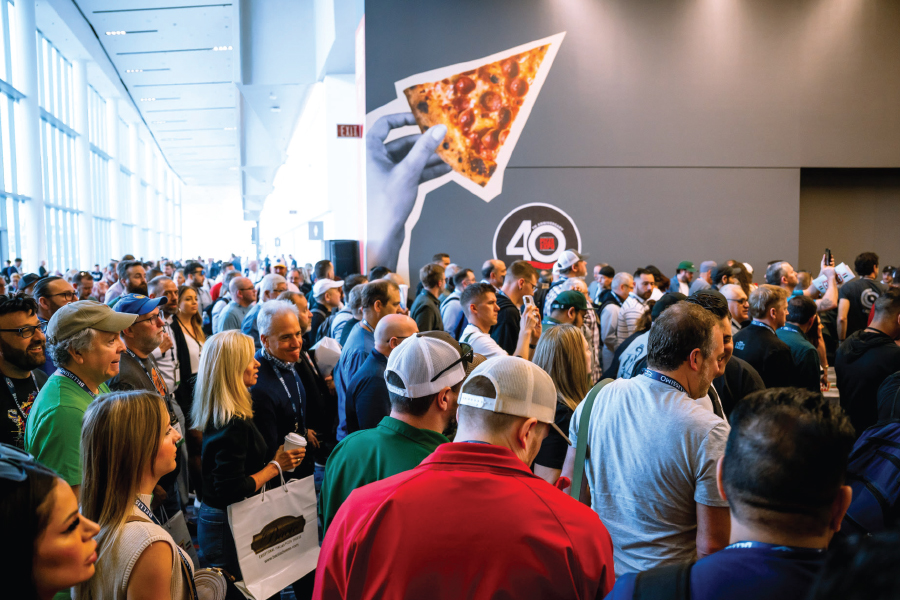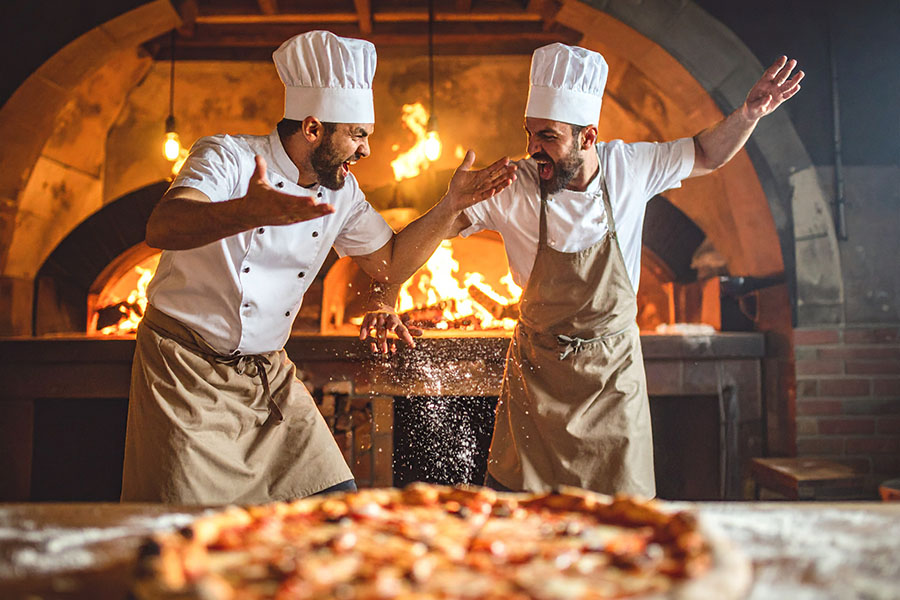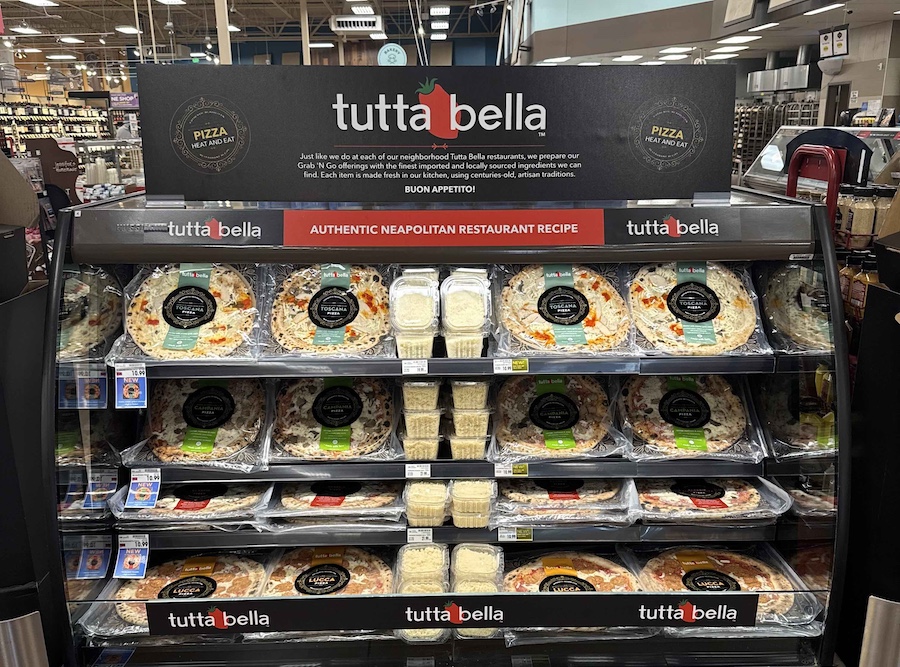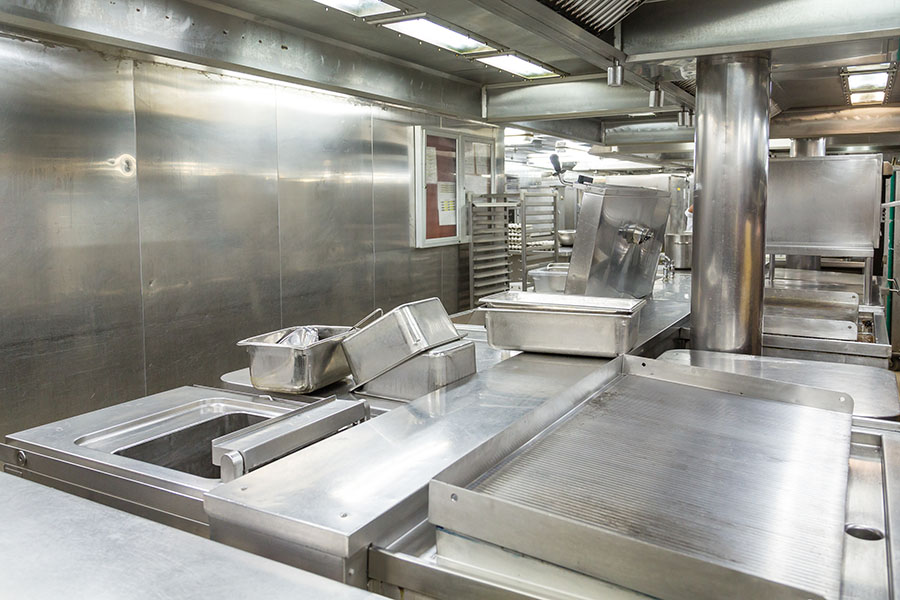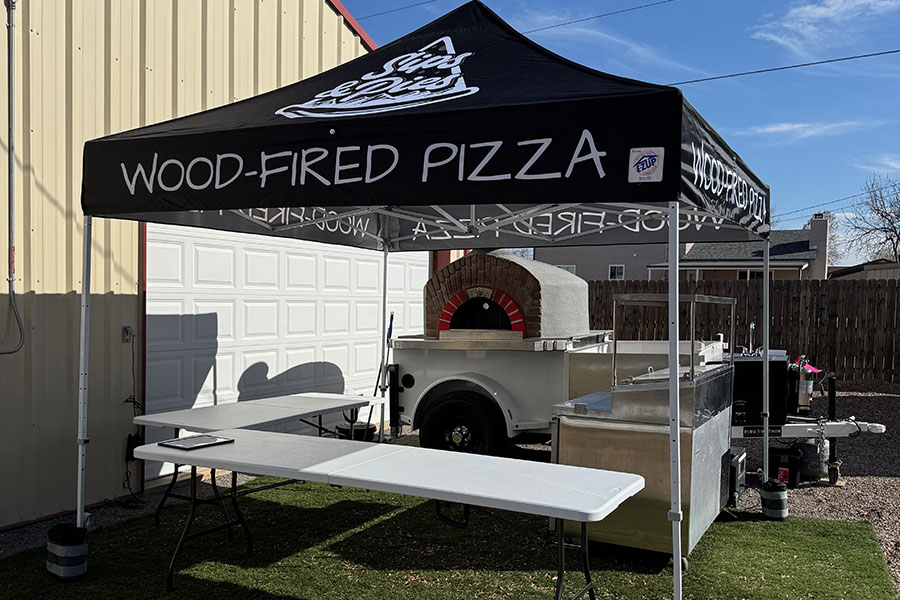A Pizza Expo Speakers Roundtable: Top Business Concerns
According to our pizzeria operator survey data, as well as a small business survey, key concerns topping both lists include rising costs, inflation, supply chain issues, tariffs, labor issues and more.
As we gear up for Pizza Expo, we are pulling together a roundtable discussion featuring a handful of Pizza Expo speakers to address some of the top business concerns restaurants are facing right now. See how they are tackling them. To get the pulse of the pizza industry, we spoke with:
Tyler Carlson
Partner, TyMark Restaurant Group
Westerly, Rhode Island
Leah Scurto
Pizzaleah
Windsor, California
Melinda Carbajal
Simply Pizza Truck & Catering
Denver, Colorado
Nicole Bean
Pizaro’s Pizza
Houston, Texas
George Panagopoulos
Dedham House of Pizza
Dedham, Massachusetts
What is your top business concern and how are you navigating it?
Leah Scurto: I would say my top business concern is always maintaining sales and customer retention. I really focus on keeping things new and doing my best to stay on trend. With my menu, I focus on seasonal specials so that customers don’t get bored with my menu.
Customer retention for me is often about customer service. Making people feel welcome and like they’re part of the family when they come in. Constantly training, constantly staying on top of how we treat people.
Melinda Carbajal: I think loss in sales. We frequent the same spaces each year for events and festivals. In 2024, those sales were down an average of 13 percent. The number of customers was just less. As the year progressed it made us pivot and find ways to increase each average ticket sale to make up the difference.
Nicole Bean: Continued price increases across the board. We are making modifications to our menus by providing customers with updated and “fresh” items, and along with that comes small price increases.
George Panagopoulos: Our town is growing faster than a teenager’s appetite, and with that expansion comes both opportunity and competition. New sandwich shops and pizzerias are popping up like mushrooms after a rainy day, each taking a bite out of the market. But instead of squabbling over crumbs, my goal is to bake a bigger pie – one that keeps Dedham House of Pizza thriving while keeping overhead costs from giving me a heart attack.
How do you manage to maintain menu affordability while navigating rising food and supply costs?
Leah Scurto: I try not to put all my eggs in one basket so I have options to buy the same product from multiple distributors. If one distributor has a higher price one week, then I’ll buy from the other. Or one distributor may have better pricing on paper goods, and the other may have better pricing on meats. So I purchase accordingly.
Melinda Carbajal: A limited menu and our business model allow us the flexibility to manage food costs. We buy higher volumes of the same product and negotiate breaks for bulk. We also are always cold to hot so we can control waste and ensure we aren’t adding to the overall food cost.
Nicole Bean: Altering some menu items, adding flavor profiles for “refresh” or removing basic pizzas into Build Your Own categories to keep menu pricing more enticing – less mistakes and less modifications the better for the line (overall), and faster to get butts in seats and people out the door (to-go orders/delivery).
George Panagopoulos: Inflation isn’t just something economists talk about on TV – it’s a real-life nightmare that makes everything from cheese to cardboard boxes more expensive. Sure, I could just jack up prices, but no one wants to pay $40 for a large cheese pizza unless it comes with a free foot massage. Instead, I’ve found smarter ways to keep costs down while keeping customers happy. We run daily deals and digital coupons through our app and e-mail list, making sure our regulars feel like they are getting a steal (without us actually going bankrupt). We also encourage online ordering to streamline operations, reducing the number of times my staff has to listen to someone yell their order over the phone while driving. On the supply side, I’ve been sourcing vegetables and other high-priced items from my regular providers from Restaurant Depot because they cost less, and I’ve locked in long-term contracts with waste-removal companies and other vendors so we’re not paying a small fortune just to throw out empty pizza boxes. And because I actually like knowing where my money is going, I sit down with my accountants to break down profit and loss statements like a detective in a crime show – every dollar has to justify its existence. Detailed line description items on profit and losses and tax returns helps me set goals to decrease the costs from the year before. A form of healthy conception with myself and last years numbers.
Technology is changing the way people order food, and I refuse to let Dedham House of Pizza be the Blockbuster of pizzerias. We’ve already rolled out a variety of online ordering systems and self-service kiosks, but there’s more to come. Ever thought about paying for your pizza with Bitcoin? No? Well, some people have, and I want their business too. Accepting cryptocurrency would cater to the tech-savvy crowd who want to buy a Volcanic Hawaiian with Ethereum and feel like they’re living in the future. Speaking of forward-thinking, a subscription-based dining model could be a game-changer – imagine a monthly membership where regulars get exclusive discounts, priority ordering, and maybe even a free slice on their birthday (because nothing says loyalty like free pizza). And since automation is the way of the world, AI-powered customer service chats and advanced POS integrations will make ordering smoother than a fresh ball of dough and is on our bucket list for 2025.
Have you done anything to prepare for possible tariffs on goods or the possibility of global supply chain issues?
Leah Scurto: I definitely anticipate pricing is going up on multiple items. I may or may not have a back stock of certain imported non-perishables in my garage.
Melinda Carbajal: We are a user of imported flour currently. To be frank, we know that grains in this country often times leave and return, so even buying an American brand doesn’t necessarily get you away from tariffs. We are learning and digging into finding local grain companies who are producing in our backyard.
Nicole Bean: Yes, we’ve evaluated what countries are being tariffed and modifying into MKT (market) pricing, if necessary.
Looking ahead in 2025 and beyond, how do you see the future of your restaurant in terms of staffing and immigration concerns?
Melinda Carbajal: I think this is going to be a problem across the hospitality industry. Not only in restaurants but also in getting the goods we need at reasonable costs. As a country, we have not made the hospitality industry a desirable occupation. This means we have to change the culture and mindset around working with food!
I serve as a school board director, and I am hopeful that all of the changes in post secondary work will give us momentum to drive change. CTE programming is booming and there is acknowledgment that the cost and college coursework is not for everyone. This is our opportunity to reignite pride in working in our career field.
Nicole Bean: I’m currently not concerned. Without getting too political, I think there’s a long line to scroll through before restaurants see a major impact.
What types of benefits, incentives, or workplace culture initiatives have you implemented to ensure your team feels valued and motivated, especially during challenging times?
Tyler Carlson: In the last few years we have instituted health benefits and a 401(k) with company match. These have certainly played a big part in us being able to offer more complete compensation to team members of all levels. Unsurprisingly, they help most with the type of career employees that can provide real longevity for themselves and the team. We also have generous bonus programs in each location that include all staff members generally twice a year (most commonly during the holidays and right after our peak season ends in mid-September). We regularly bring managers and high-performing staff members out for a variety of events including Pizza Expo, food shows and recreational trips. This past year, we sent six of our highest performing managers to Nantucket for a post-season retreat.
Financial benefits like these are certainly encouraging and good for retention, but they aren’t feasible for all restaurant owners. I would also argue they are less valuable than the core culture that exists within the company or any of our locations. It’s very hard to do, but we are fortunate to have a management team that prioritizes an empathetic and accountable leadership style. People thrive on connection and they respond to humility from their supervisors. Our managers seek to be hands-on problem solvers and as understanding as they can be when handling issues staff members are having without compromising the core standards that make our business run. You can’t fake a culture like this, and it is hard to build. We are far from perfect, but this empathic and humble approach has translated into excellent retention rates and a lot of team members that will put the business before themselves when challenged.
Leah Scurto: I offer a 401(k) plan with a 6-percent match to every employee eligible. I also have been fortunate enough to be able to bonus my staff out twice a year. If I make money, we all make money. My entire staff gets a free meal while they are working and I offer them 50 percent off when they are not working.
Melinda Carbajal: We are serious about supporting our staff in future endeavors. We encourage them to take a serious look at the hospitality industry as a career and offer scholarships for growth, but we understand our business is also a provider while people attend other education programs and therefore, we are extremely flexible with scheduling and support their personal growth.
Nicole Bean: Celebrating successes, no matter how large or small. Providing constructive feedback and being positive on changes plus being proactive in communication with the team so there are no surprises at the end of the day. Really being overly clear in hiring and on boarding has made a tremendous difference.
George Panagopoulos: When it comes to staffing, I follow a simple philosophy: treat your team like family (but the fun relatives, not the ones who make Thanksgiving awkward). Employees are more likely to stick around when they enjoy where they work, so we’ve built a culture that keeps morale high. We offer referral bonuses for employees who bring in reliable friends and family members, ensuring we have a solid team that isn’t just here for a paycheck. Communication is key, so we have handbooks, group texts, and ongoing training to make sure everyone’s on the same page. We celebrate birthdays, because nothing boosts workplace happiness like free cake. And of course, we keep everything above board legally – everyone is properly documented, with completed I-9 forms, because the only drama I want to deal with is whether pineapple belongs on pizza (it does, by the way).
Sales performance is a top-of-mind concern. What new or adjusted strategies have you implemented to help boost your revenue?
Leah Scurto: I try to work a lot with our local community. Sponsor local sports teams, host dine-and-donate nights and always give away gift cards for any auctions or events happening locally. It may sound like I’m giving away my revenue, but every time I do this, I get new customers that end up coming back. So in the long run, it’s a revenue booster.
Melinda Carbajal: We have really tapped into marketing through text messages as a means for reaching guests and ensuring return customers in terms of boosted revenue! We have a day for Detroits, we added wings to the menu, small items to boost the average ticket sale.
But boosting revenue is just a piece of the puzzle, these times call for procedures, policies and controls that manage expenses. By controlling expenses, we free some space when times are tight.
Nicole Bean: Seeing potential in what you currently have on hand. For example, equipment used for a singular purpose could have a dual purpose for an additional menu item. Adding seasonal items as a fun flare to your regular menu is a nice touch that enhances your business or alters the process in a beneficial way. For example, we are adding seasonal starters to one location and modifying this location to be a “flagship,” so you won’t be able to get some items at other locations outside of this one – creating a draw to a specified location.
George Panagopoulos: After a record-breaking sales year in 2024, my goal is to keep that momentum going. Last year, we dipped our toes into catering, and it turned out to be successful – so now we’re going all in. We invested in a double-decker Vulcan convection oven, which means we can pump out more food, faster. We expanded our catering menu to include new items that corporate clients, schools and large events will love. And to make sure people know about it, we sent out a targeted direct mail campaign to local businesses. The result? A 30-percent increase in catering sales compared to January 2024 – proof that sometimes, snail mail still works.
How are you addressing any negative shifts in consumer behavior (whether that is reduced spending or changing dining habits)?
Leah Scurto: I do my best to let people know that we value the money they spend at my restaurant. That way, even if they’ve cut back on the amount of times they go out per week, they know that their money is valued and appreciated when they come to Pizzaleah.
Melinda Carbajal: People don’t just want good food, they need an experience or convenience. We are tapping into this mentality with every new program, pop up, event we attend. People spent thousands of dollars to attend Taylor Swift concerts last year, Amazon is raging, Chick-fil-A and other fast foods had incredible numbers. Doordash and Uber Eats are working. So while spending may be down in independent restaurants, people are still willing to empty their pockets. This means we have to experiment, tap into creative measures and pivot. Every day is an opportunity to meet our customers where they’re at! Hire young, ask for feedback and move without fear! Don’t keep returning to what isn’t working. Quit and try something out of left field!
Nicole Bean: One of my stores has had a recent shift in sales. It could be due to the amount of restaurants and other pizzerias that have opened nearby or just a usual election year shift. Either way we’ve seen it and are looking to modify by altering this location in a few ways to draw interest. One major change is slowing down the pace. Though we are fast casual, we are looking to keep butts in seats longer by providing additional options to create a coursed meal. We are also spending a little more in our marketing budget via influencer marketing to capture a variety of potential customers and more unique content out there.
George Panagopoulos: Not everything is smooth sailing. Recently, I’ve noticed people tightening their wallets like they’re guarding the last slice of pizza. Consumer spending is slowing down, and after talking with other business owners, it’s clear this isn’t just my imagination. So rather than sit around waiting for things to pick up, I’m taking action. We’re doubling down on branding, making sure Dedham House of Pizza isn’t just a place to eat but a household name. Our marketing strategy is diversifying – e-mail campaigns, text promos, social media engagement, direct mail, and even influencer collaborations. The key is staying in front of customers every day, so when they think “What’s for dinner?” The answer is obvious. At the end of the day, the pizza business isn’t just about making great food – it’s about adapting, innovating, and executing ideas that keep us ahead of the game. Whether it’s integrating cryptocurrency, launching a subscription model, or turning our catering into an empire, I’m committed to making sure Dedham House of Pizza doesn’t just survive but thrives. And if that means someone wants to buy a pizza with Dogecoin, well, who am I to stop progress?
To learn about the sessions these pizzeria leaders are offering at Pizza Expo, check out the Education Schedule at pizzaexpo.com.
Go to the Pizza Expo 2025 NEWS HUB: Latest News from the World’s Largest Pizza Show.

